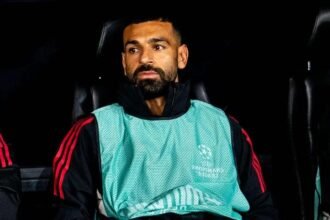After years of calculated spending, Liverpool FC have made headlines this summer with a flurry of high-profile transfers. While fans and rivals alike marvel at the Reds’ new-found financial muscle, the truth behind the spending spree reveals not recklessness, but long-term planning, boosted revenues, and a savvy understanding of the Premier League’s financial rules.
A New Era of Ambition at Anfield
This summer has marked a notable change in Liverpool’s transfer market behaviour. Known for their historically conservative approach, the club has already splashed £185 million on top talents like Florian Wirtz, Jeremie Frimpong, and Milos Kerkez. Reports also suggest a potential blockbuster deal for Alexander Isak is on the horizon.
But rather than a radical shift in policy, this newfound assertiveness is the product of careful financial groundwork, strategic timing, and a rare alignment of opportunity and flexibility.
Record Revenues Fuel the Fire
At the heart of Liverpool’s transfer activity is a dramatic increase in club revenue.
Thanks to consistent Champions League qualification, a recent Premier League title, and an expanding global brand, Liverpool’s commercial strength has surged. The redevelopment of Anfield—raising capacity from 54,000 to over 61,000—has significantly increased matchday income, enhancing one of the club’s core revenue streams.
According to the Financial Times, the club’s total income is now estimated at £714 million—up roughly £100 million from the previous year. This financial boost has given Liverpool the resources to invest aggressively while remaining compliant with spending regulations.
Conservative Past, Flexible Present
Much of Liverpool’s current freedom stems from their restraint in previous windows.
During the final seasons under Jurgen Klopp and the early tenure of Arne Slot, Liverpool kept spending minimal. Only two signings were made last summer, and the January window passed without additions. This prudent approach helped lower amortisation costs and reduce long-term financial commitments.
Crucially, Liverpool stayed well within the Premier League’s Profit and Sustainability Rules (PSR), which allow up to £105 million in losses over a rolling three-year period. By avoiding excess in prior years, the Reds created room to maneuver this summer.
Smart Selling and Creative Deal Structures
Liverpool’s financial strategy doesn’t end with restraint—it also includes intelligent player sales and well-structured deals.
Recent sales of academy graduates Jarell Quansah and Caoimhin Kelleher brought in around £50 million in pure profit. Further departures, including the potential exits of Tyler Morton and Harvey Elliott, could raise even more without incurring accounting costs.
The club has also spread payments for incoming players across multi-year contracts, reducing the immediate financial burden. A £100 million signing, for instance, might only cost £20 million annually in accounting terms. This approach allows Liverpool to stay compliant with financial regulations while continuing to build their squad.
Additionally, should the club choose to sell big names like Luis Diaz or Darwin Nunez, those deals could offer further financial flexibility—especially as initial transfer fees are amortised over time.
Strategic Spending, Not Reckless Splurging
While the figures may suggest Liverpool have thrown caution to the wind, the reality is far more nuanced. Their current activity is built on a solid financial foundation laid over several seasons. Rather than breaking their financial model, the Reds are executing a well-timed strategy that blends ambition with sustainability.
Liverpool’s leadership have seized a moment of strength—leveraging high revenues, minimal liabilities, and smart planning—to act boldly in the transfer market without breaching the rules.











